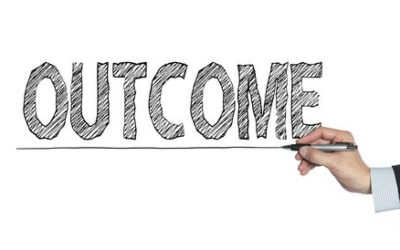I can along this blog posting by Bruna Martinuzzi and thought it would be a good share. We think often what our meetings should include but sometimes we need to remember what our mistakes could be and work not to make these mistakes. This blog posting points out some of the do not’s, I usually like to talk about the do’s but in this case as it is not my original work I feel the do not’s will work just fine.
You may run a great meeting, but if you’re doing any of these seven things at the very end, you’re wasting your efforts and your employees’ time.

As the English proverb goes, “Time is the soul of business.” What are the biggest time thieves in business? Research shows that, next to conversations at the water cooler and computer and software problems, meetings are the biggest culprit. They are an insidious productivity killer for small-business owners.
Well-conducted meetings can lead to enhanced communication and greater buy-in and consensus. However, many meetings fail to achieve objectives because the person running the meeting didn’t plan the end properly. Do you do any of the following at the end of your meetings?
1. Not paying attention to the “meeting after the meeting.”
Someone who holds a meeting after the meeting, usually behind closed doors, to disagree with a course of action is hurting productivity. End with a “closing round” to give everyone a chance to comment on the meeting out in the open. Often, this unveils issues you can address to prevent them from surfacing later. As Ev Williams, co-creator of Twitter and Medium, explains, in a closing round “there is no discussion or back-and-forth allowed. People tend to talk for less than 30 seconds (often a lot less), so you could close a large, 10-person meeting in less than five minutes …The closing round is worth doing, because it gives everyone, in a sense, a ‘last word’—the chance to get something off their chests that they might otherwise carry around or whisper to their colleagues later.”
In his seminal book, Good to Great: Why Some Companies Make The Leap … And Others Don’t, author Jim Collins researched highly successful companies and found that one of their practices is to unify behind decisions. No matter how heated and vigorous the debate is in search of the best answers, when they leave the meeting, people stand united regardless of parochial interests. If this is not the norm in your company, confront team members to change the culture.
2. Failing to designate responsibility.
How often have we attended meetings, or strategic retreats, where the gathering ends with a lot of excitement and decisions to pursue new directions, only to see it all fizzle a few weeks later? This is because the meeting ended with no clear accountability on who will do what. Apple has a system it calls the Directly Responsible Individual (DRI). This is assigning one individual, not a team, to be responsible for an action item.
In this video, Adam Lashinsky of Fortune magazine explains how the DRI concept establishes accountability and helps a giant company such as Apple function like a small startup. All meetings at Apple have an action list, and next to each action item is the DRI. Consider following this model so you eliminate any confusion on who’s responsible for what at the end of each meeting.
3. Not following up on action items.
A surprisingly common problem with meetings is not having a system in place to follow up on action items, making sure people do what they say they’ll do. Use Outlook’s Meeting Workspace Site to track tasks. (Here are step-by-step instructions on how to do this.) You can also use a system such as After The Meeting, which allows you to easily and effectively track action items assigned in a meeting.
4. Taking too long to share notes from the meeting.
Meeting notes are crucial to help everyone remember what was discussed and decided. Often, the designated note taker makes detailed notes but they are either distributed too late or not distributed at all. One way to get around this problem is to use a program such as minutes.io, which helps you minute your meetings easily and make notes available to everyone without delay. It’s free and you don’t need to be connected to the Internet during the meeting to use it. Two other note taking tools that will help you simplify your meeting process are OneNote and Less Meeting.
5. Not evaluating the meeting.
Ending each meeting without evaluating how it went is a surefire way to ensure that unproductive behaviors and procedures will be repeated from meeting to meeting. You show respect for people’s time and efforts when you take a moment at the end of each meeting to check in on how people feel about the meeting. A simple, “What worked well?” and “What could we improve?” can yield useful information that will save time in the future. You can even designate someone to monitor the meeting and provide a brief, verbal report at the end. Consider, as well, using a system such as Google Forms to create a survey that’s sent out periodically after an important meeting.
6. Not ending the meeting on time.
One of the worst practices in meetings is not respecting the announced ending time. Frequently, this is due to the meeting starting late, or the meeting chair letting some team members ramble on or go off topic. Take an inspiration from Google, which often has a giant timer on the wall to exert subtle pressure and prevent meetings from running off schedule. As author Carmine Gallo explains, “It’s literally a downloadable timer that runs off a computer and is projected 4 feet tall.”
7. Ending a meeting at a bad time.
Often, customers, employees or other stakeholders who work in others cities join the meeting by phone. When these individuals are in different time zones, they sometimes have to excuse themselves from the meeting just before the meeting is concluded. This can result in inefficiencies as they may miss last-minute details of what was decided concerning action items that are their responsibility. Make an effort to schedule meetings that take into account optimal times for everyone’s attendance. Use the World Clock Meeting Planner to help you in this regard.
By Bruna Martinuzzi




0 Comments